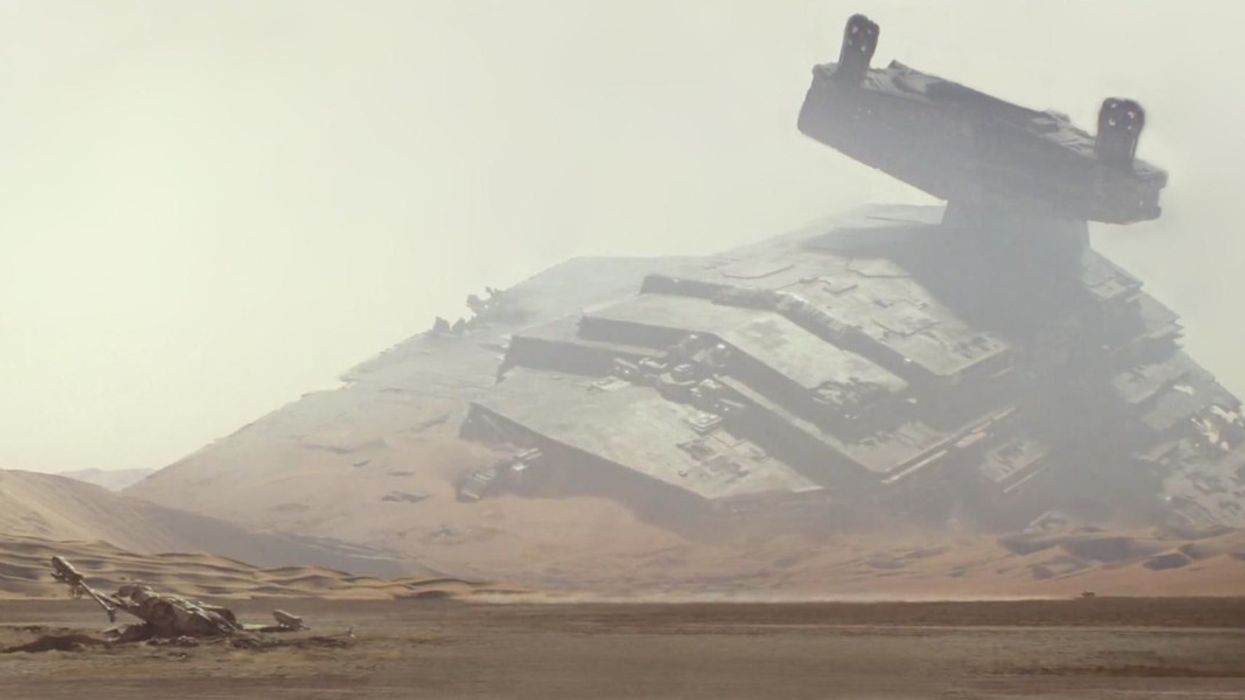The 10 Kinds of Camera Shots Every Filmmaker Needs to Know
Everyone could use a refresher on these commonly used camera shots, whether you're on the set every day or just starting out in film.

If you're a new filmmaker and you haven't checked out our massive guide of 50+ Camera Angles, Shots, and Movements, you absolutely should. It'll certainly set you up with a lot of the basic information you need to know about cinematography.
However, if you're strapped for time and just want a quick primer on a few essentials, Shutterstock has put together a short video outlining 10 basic camera shots that will come in handy, no matter if you're shooting a serious drama or wacky comedy.
Watch the video below, then check out some of our favorite examples.
1. Medium Shot
This is a commonly used shot that frames a character from the waist up and is typically used in dialogue scenes. More than one character can be featured in a medium shot, but it's still the kind of shot that feels personal and makes it seem like the viewer is part of the character's conversation.
Read our guide on medium shots for even more insight and additional examples.
2. Close-Up Shot
A close up is generally used to convey emotional beats. It is a shot that frames the subject tightly, without showing much of the surrounding scene. You can use close ups to highlight parts of a character's face, their wardrobe, or items they hold.
We've got an in-depth piece on close-ups, too, for those who want to learn more.
3. Medium Close-Up Shot
This is slightly closer than a medium shot, but not quite a close-up shot. You shoot a character from the torso up, with a focus on their head.
The flexibility of this shot allows you to still capture some of the character's environment, while a close-up or extreme close up won't.
4. Extreme Close-Up
This kind of shot dictates what you want the audience to see. You are showing one detail to the viewers, whether that's the character's eyes or an object they are holding. Just look at how the One Ring is shown in the following scene from The Fellowship of the Ring. At points, it takes up the entire frame.
5. Wide Shot
This kind of shot shows more the character's environment and is usually utilized if the character is engaging in an action sequence or doing a walk-and-talk. A wide shot typically shows the character in full, from top to bottom.
You might start a scene in a wide shot and work your way closer, then end the scene in another wide.
6. Extreme Long Shot
These are also called extreme wide shots. Use this shot to impress your audience with the scale and scope of the world you've created in your film. These shots also convey distance.
Establishing shots (as we'll see below) tend to be extreme long shots.
7. Establishing Shot
Establishing shots inform the viewer about the setting without any dialogue. You can tell the audience where your characters are, what time period it is, what kinds of lives they live, and more, just by using establishing shots. The way these shots are filmed can also help make your film's tone clear.
The entire opening of The Shiningis basically a series of slow, creeping wide shots showing the Colorado mountains, the Torrance's route, and finally the Overlook Hotel. It is filmed in a way that suggests loneliness and tension.
8. The Long Take
This moves the camera with the character throughout a scene. This can be accomplished using a gimbal or Steadicam, or by filming handheld. This kind of shot can include several different characters and several ongoing moments of various drama.
9. Crash Zoom
This is a quirky and sometimes comedic shot that involves starting in a wide shot, then zooming very quickly onto a character or object. Sometimes the character will even break the fourth wall and look directly into the lens.
This type of shot happens to be a favorite of Quentin Tarantino's, too.
10. Point-of-View Shot
By using a point-of-view (or POV) shot, you can put the audience in the place of a character and see the story through their eyes. Well-placed POV shots can add a lot to a film, but be careful, because they can also become gimmicky and distracting.
Another film that uses subtle POV shots very well is The Silence of the Lambs.
What's next? We have so many other resources to teach you about camera shots!
Whether you're a newbie on film sets or a seasoned professional, our brand-new, crazy-extensive guide to 50+ camera angles and shots is a great place to get more detailed information and examples.
Are you a filmmaker with no space and no budget? You'll want to know these cinematography tips.
Or do you sometimes find yourself working on sets and forgetting what shots you need to cover? Remember these 10 shots are always good options.
Maybe you're ready to see some more examples. Well, here are six of the best shots in movie history and how they used movement, as well as a video essay on ingenious camera movement. And fans of Paul Thomas Anderson will definitely want to see "The Career of Paul Thomas Anderson in Five Shots."
Source: Shutterstock Tutorials

 "'Back Home"via Mercedes Arutro
"'Back Home"via Mercedes Arutro 'Back Home'via Mercedes Arutro
'Back Home'via Mercedes Arutro 









